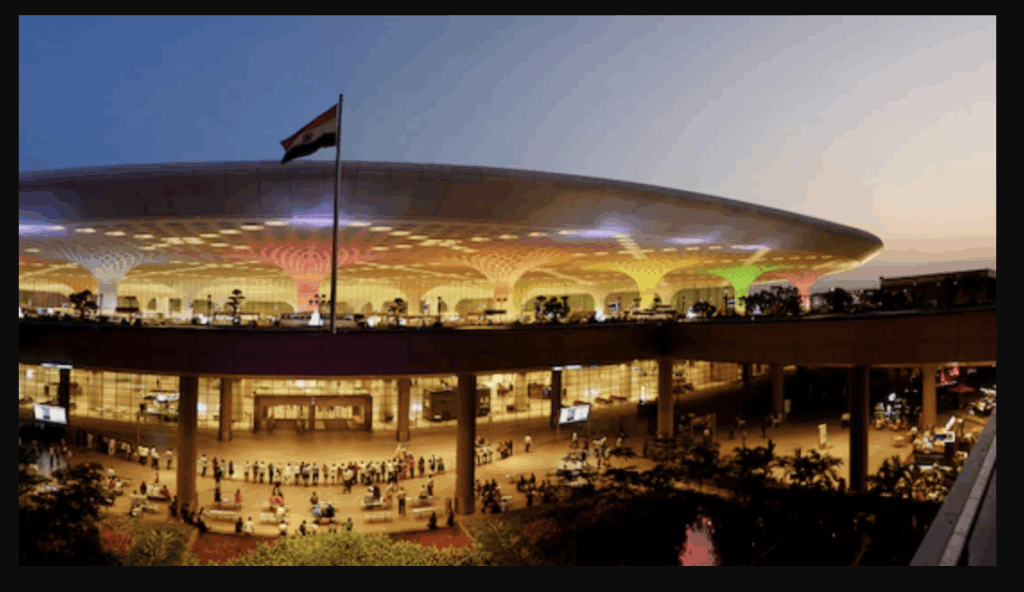After years of anticipation, the Navi Mumbai International Airport (NMIA), Mumbai’s second airport, is ready to welcome passengers on October 8, with Prime Minister Narendra Modi set to inaugurate it. Developed by Navi Mumbai International Airport Limited (NMIAL), a joint venture where Adani Airports holds 74% and CIDCO 26%, the project follows a DBFOT model (Design, Build, Finance, Operate, Transfer), leveraging private investment for construction and operations.

Terminal Design and Passenger Capacity
The airport’s lotus-inspired design features high ceilings, glass facades, and natural light. The first phase will handle 10–20 million passengers annually, with future phases targeting 60–90 million passengers per year. Modern amenities include automated check-in kiosks, biometric e-gates, swift baggage handling, and ILS systems for low-visibility landings. Sustainable measures such as solar power, rainwater harvesting, and eco-friendly waste management highlight its green approach.
Connectivity and Transport Links
NMIA offers robust connectivity via major infrastructure projects:
- Mumbai Trans Harbour Link (MTHL) drastically reduces travel time from South Mumbai.
- Ulwe Coastal Road (UCR) and Kharghar Coastal Road (KCR) enhance access.
- Integration with Mumbai Metro Lines 1 and 8 is planned.
- Targhar railway station connects the airport to Panvel and Belapur.
- Ola/Uber taxis, shuttle buses, and multi-level parking will support smooth last-mile travel.
Airlines and Cargo Operations
Several airlines are set to begin operations:
- Air India Group: 20 daily departures across 15 cities initially, scaling to 55 daily by mid-2026, with five international routes.
- IndiGo and Akasa Air will also operate from NMIA.
For cargo, NMIA is equipped with cold storage, modern freight terminals, and expedited customs facilities, supporting efficient air cargo operations from day one.
Conclusion
The Navi Mumbai International Airport promises to ease congestion at Mumbai’s main airport, enhance passenger experience with state-of-the-art facilities, and provide seamless connectivity. Its phased expansion, sustainability initiatives, and integrated transport options position it as a world-class aviation hub for India’s financial capital.

